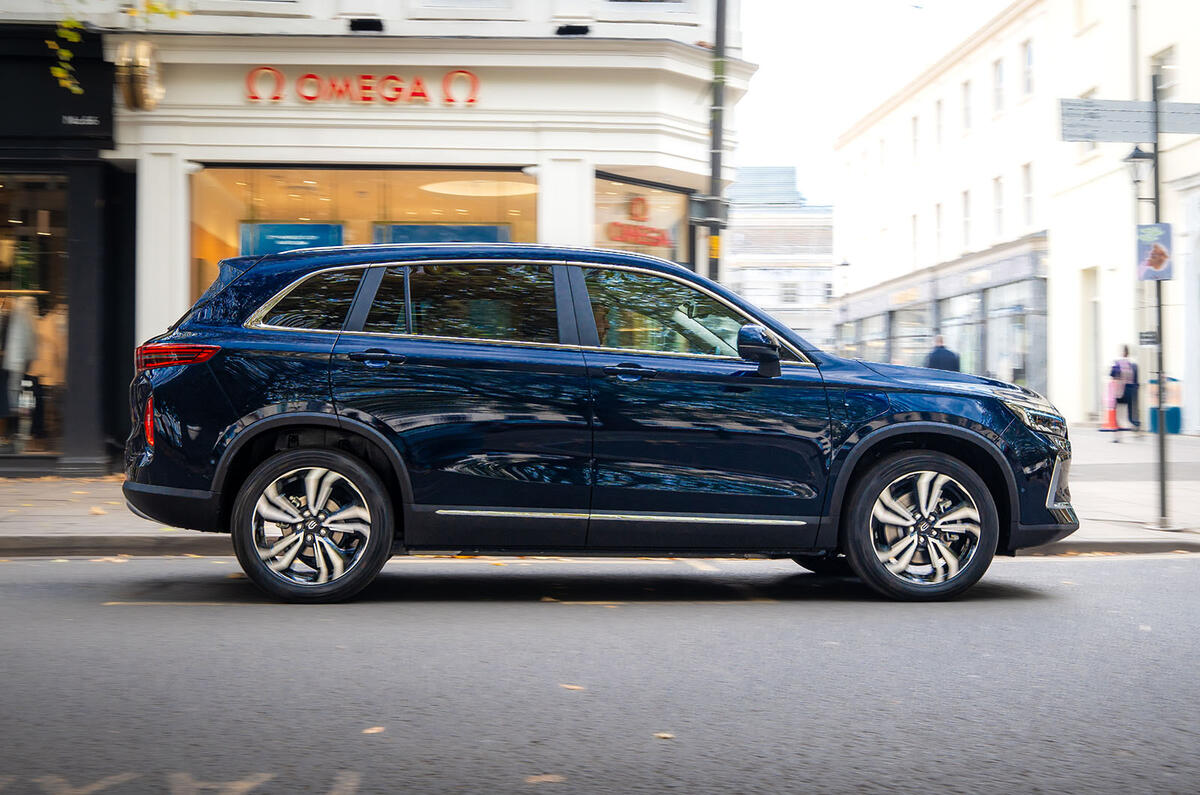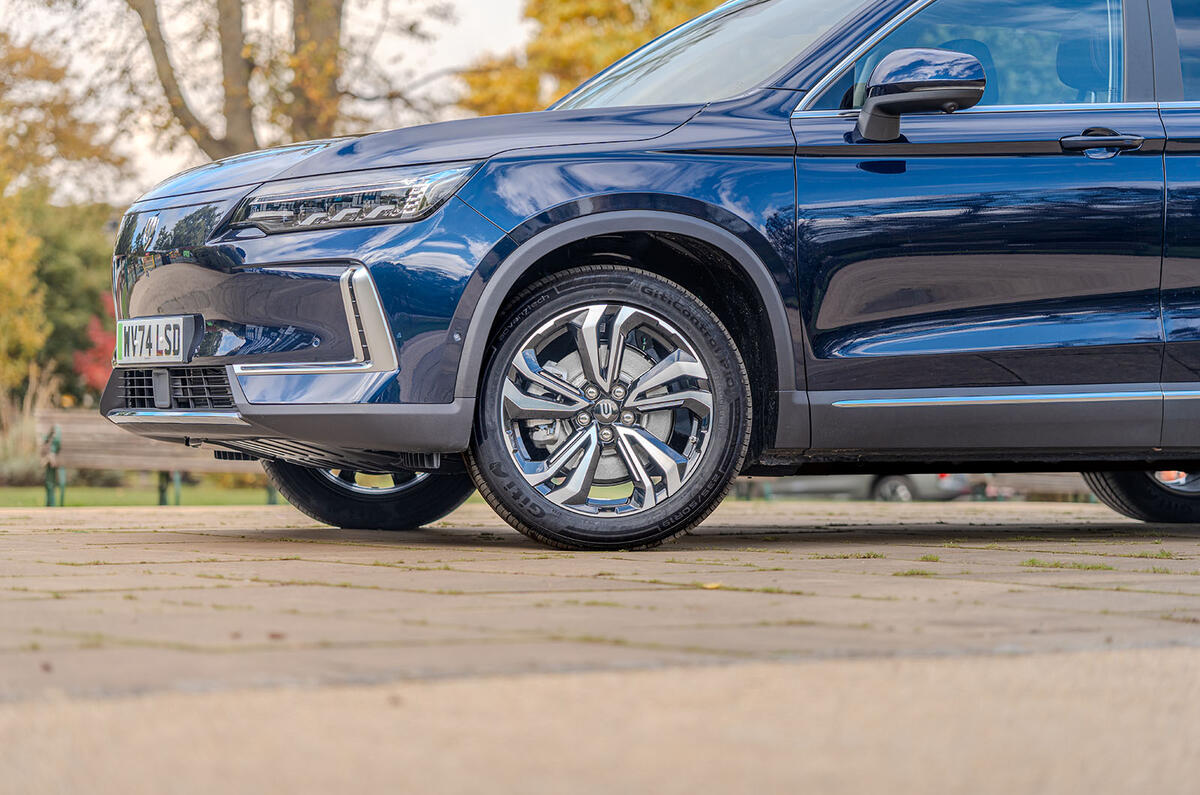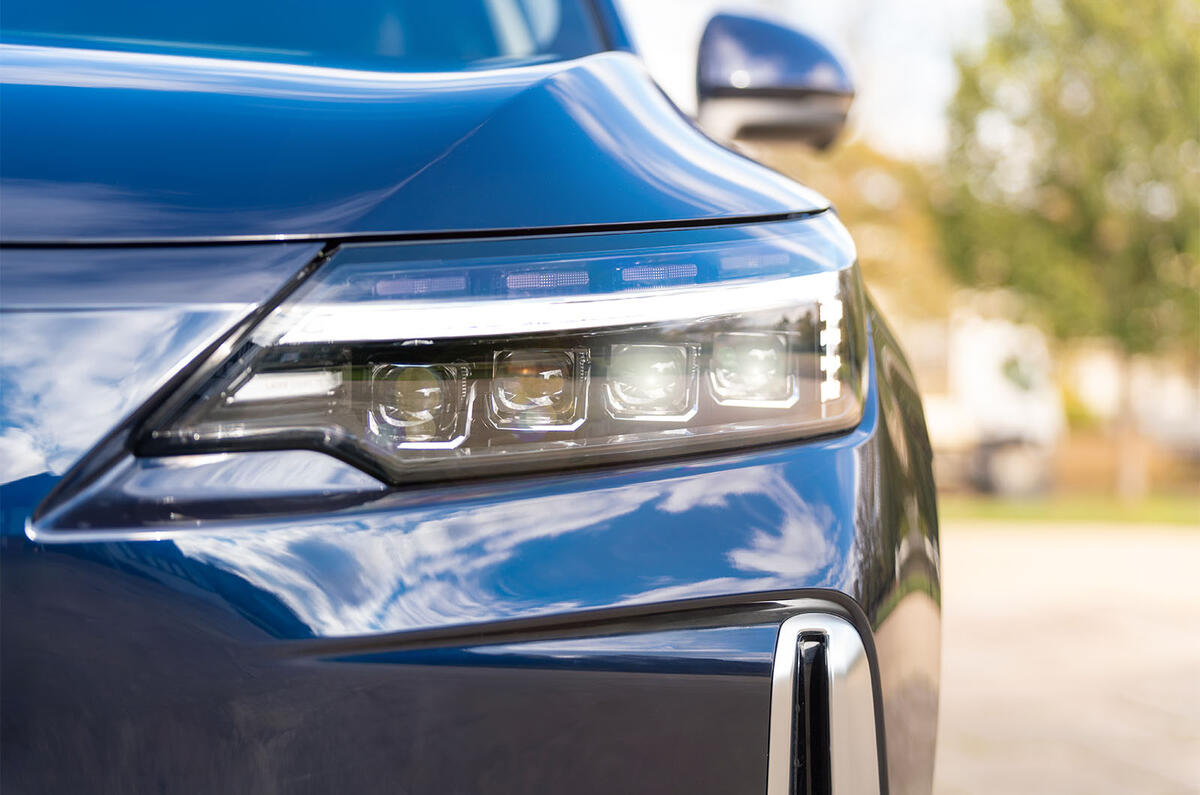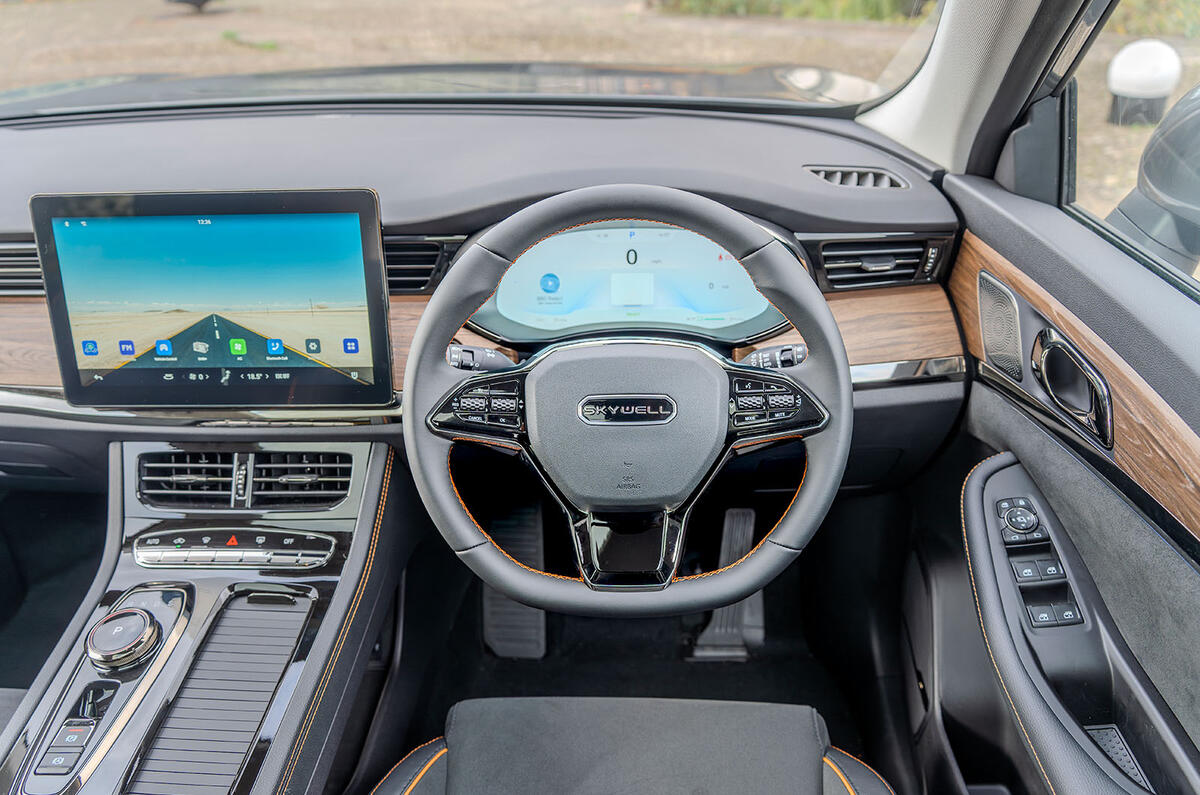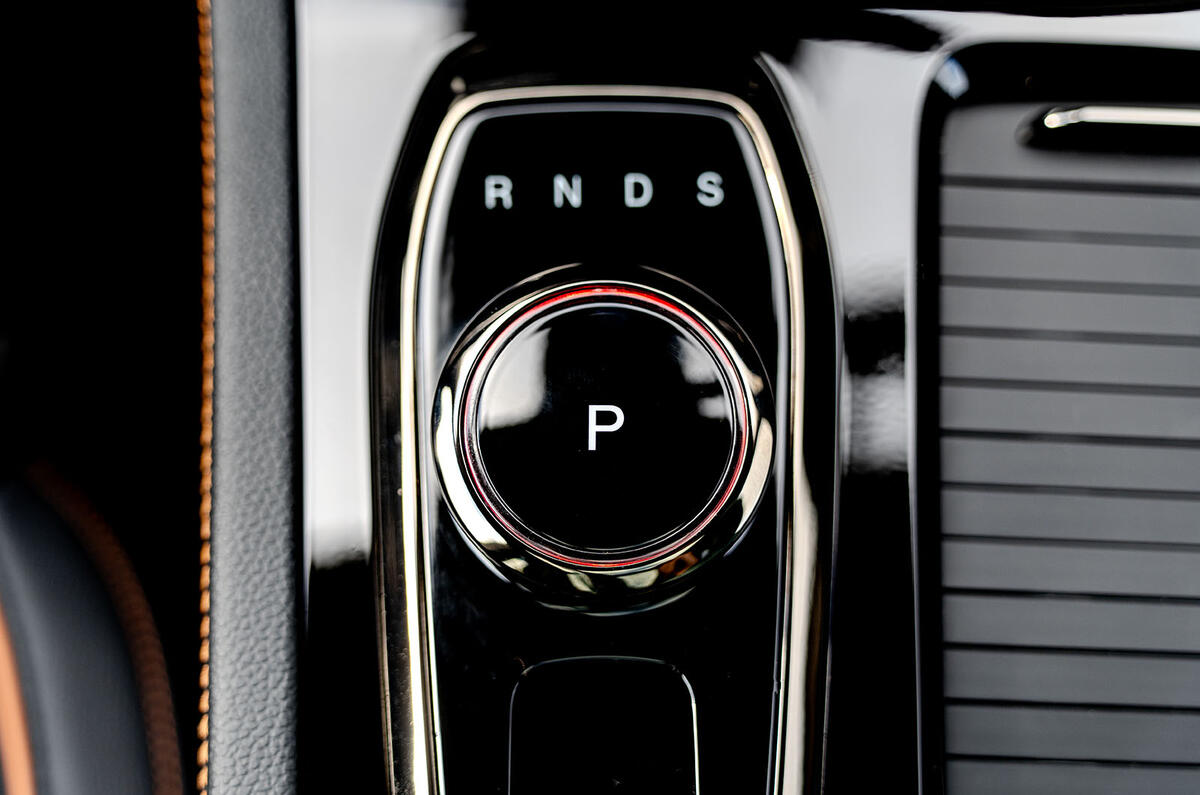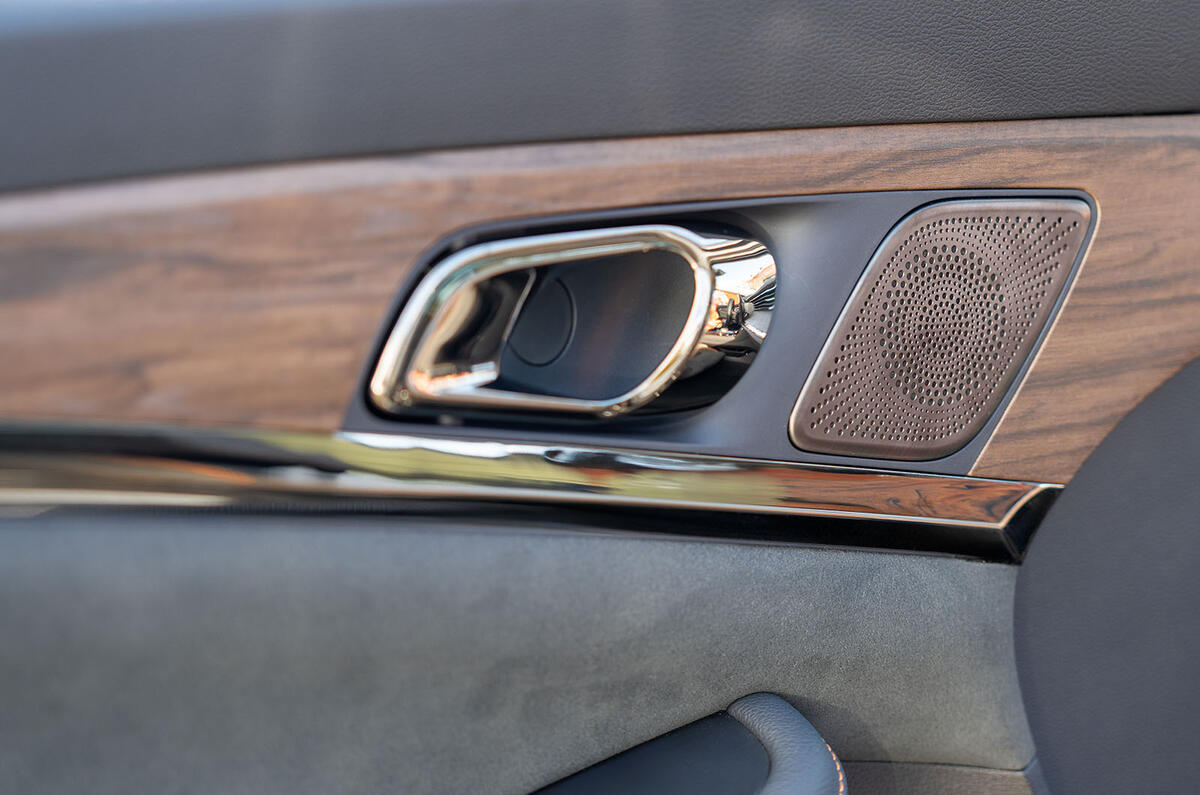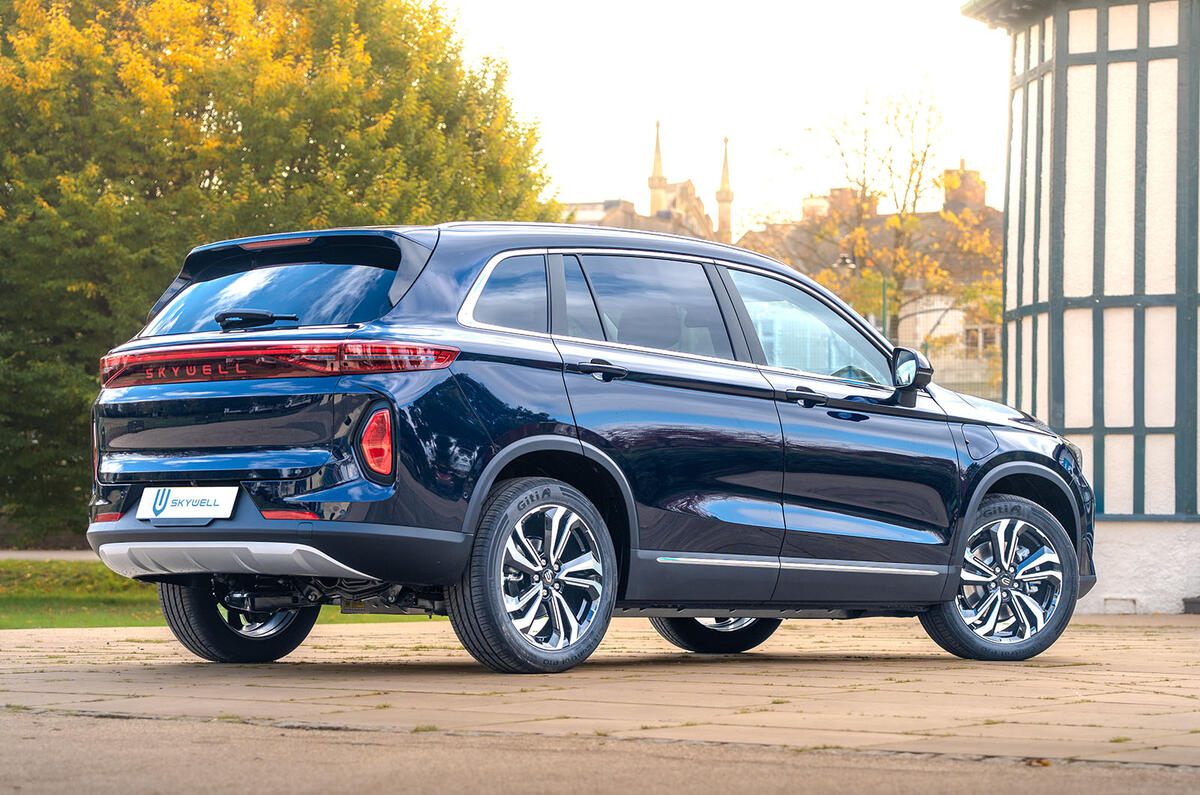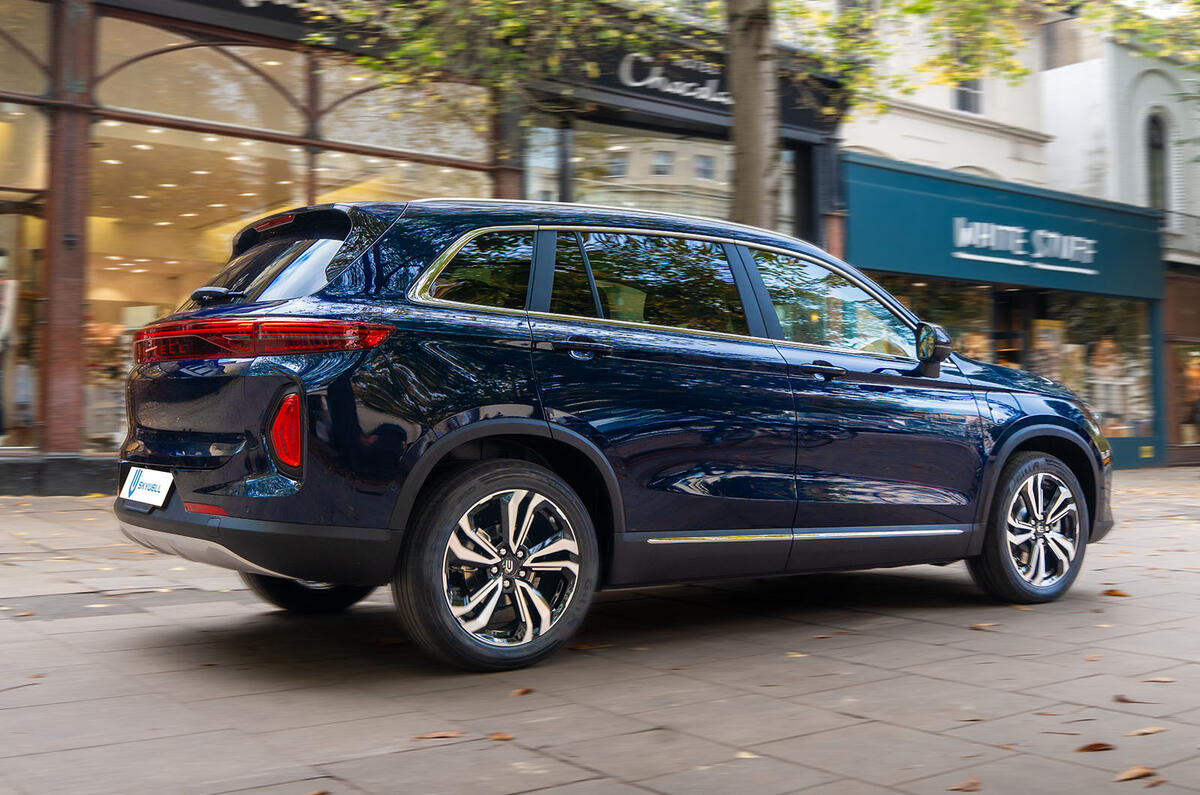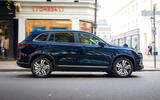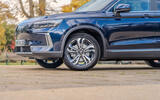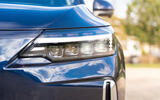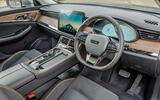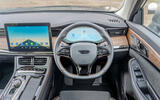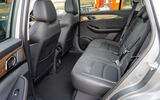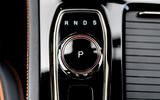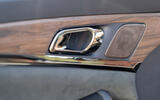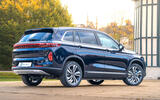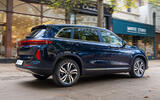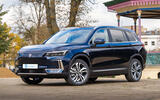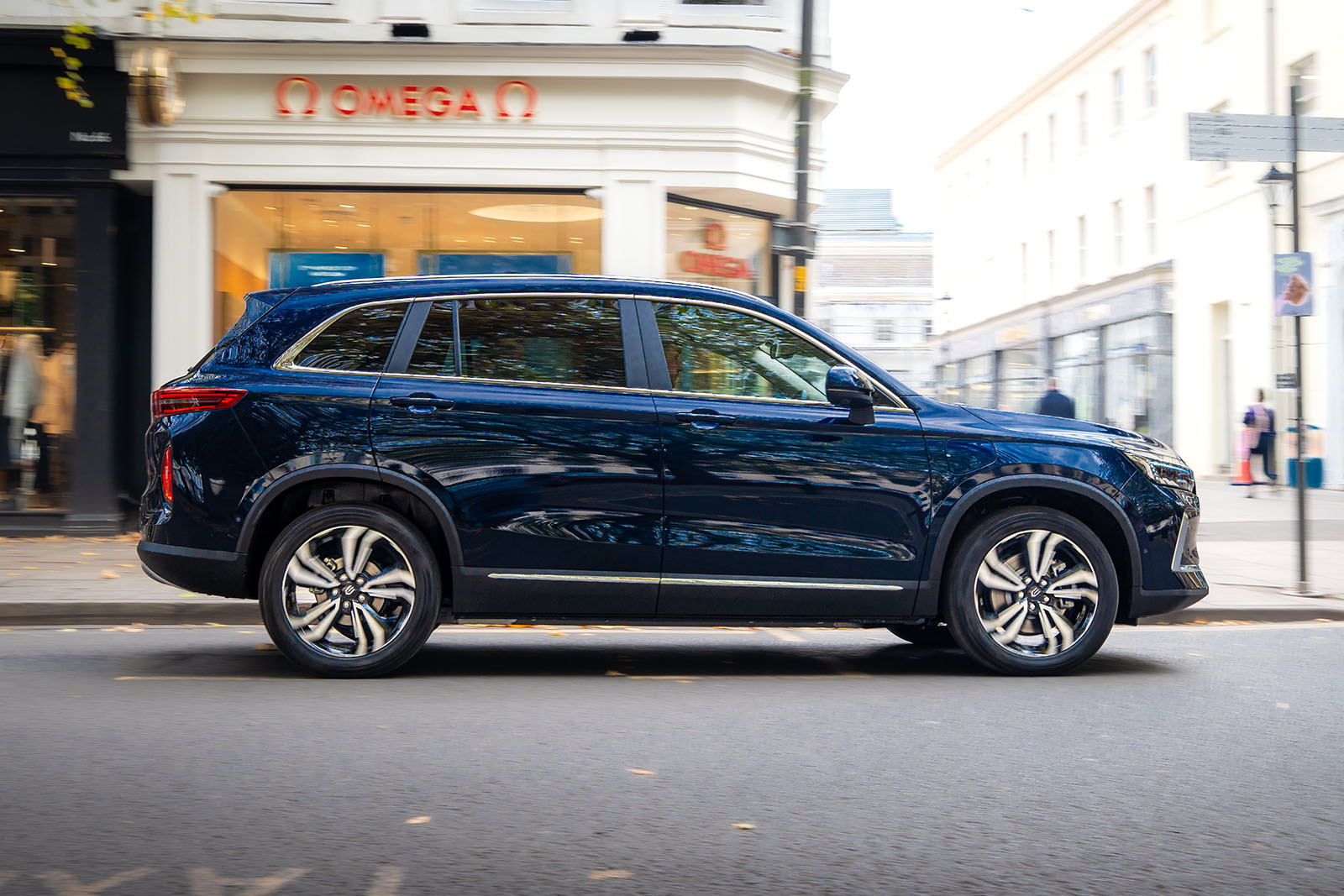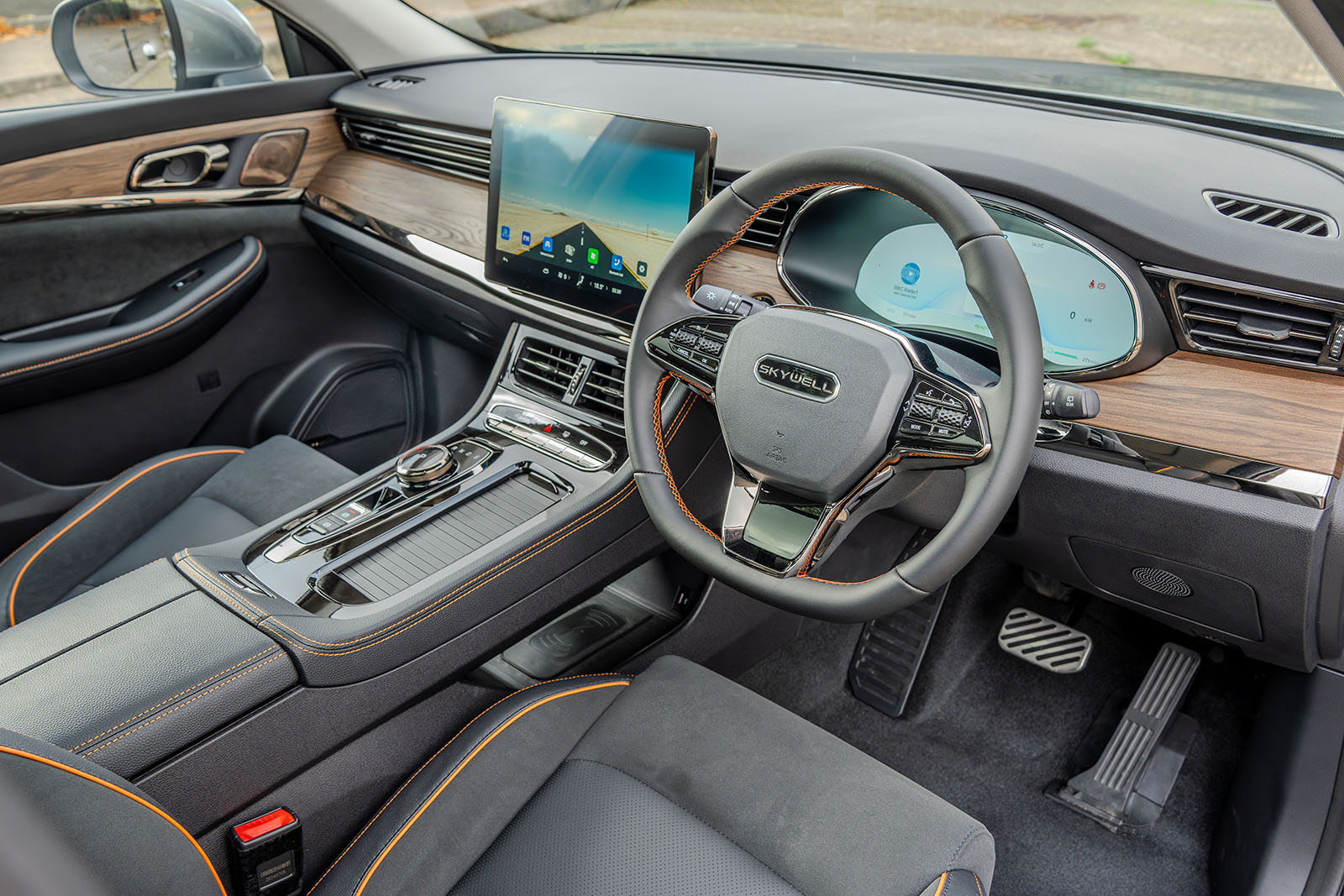One benefit of its size in comparison with its competitors is the amount of interior space on offer, and as this is the sort of car you will buy for its size, let's start there.
For rear occupants, the BE11 excels. There's a limousine-like spaciousness back there that's missing in most of its key rivals, with sufficient leg room for anyone of any size and just enough head room for people over 6ft tall.
It's the same story up front: the standard-fit panoramic sunroof makes the cabin feel light and airy, and the generously-sized footwells mean your legs have a chance to stretch out.
The 467-litre boot is only average for the class; the Enyaq gets 585 litres and the Ariya 466 litres.
There are plenty of storage compartments and cubby holes, however, and overall fit and finish is passable, with soft-touch materials lining the front and rear door cards and dashboard.
Skywell boasts about its cars having "industrial heritage" and thus the quality to back that up, but you don't have to look very hard to find evidence of frivolity. The rose-tint finish of the door handles and trim pieces looks tacky, the wood veneers feel as fake as they look and, on our brand-new test car, some of the plastic surfacing was already scratched.
Which brings us to another less successful attribute: the infotainment system. It runs from a large 12.8in touchscreen, which you get as standard alongside a 12.3in digital instrumentation display. Evidence of new-brand weirdness arises from the moment you turn it on, when you're greeted by a message in a Chinese language alongside another saying “Good afternoon , Dear User”.
Dig a little deeper and you will spot more bad punctuation, alongside horrible graphics and haphazard menu structures. The actual definition of the display is pretty good, but the way in which buttons and menus are presented is not.
Nor is its functionality. It took us three attempts and two phones to connect to Apple CarPlay, and there's a frustrating amount of lag once your phone is connected to it.
Skywell has seen fit to omit a physical volume button, instead burying it in the touchscreen. The only issue with this is that, when connected to Apple CarPlay, the adjuster is five clicks away. And because CarPlay removes the permanent bar for the air conditioning controls, those are three clicks away.
You will likely need to use smartphone mirroring for much of the time, too, because the native sat-nav system (called TurboDog 9) isn't fitted to early cars. Later models will have it, but the system can't be retrofitted, in spite of the application appearing on the screen.
Because early BE11s underwent their European type approval before July 2024 and thus didn't have to comply with GSR2 regulations, they will not be fitted with ADAS. This means that you can expect a safety rating of less than five stars if it's ever tested for safety by Euro NCAP. Skywell says it's “looking into” introducing ADAS in the future.


